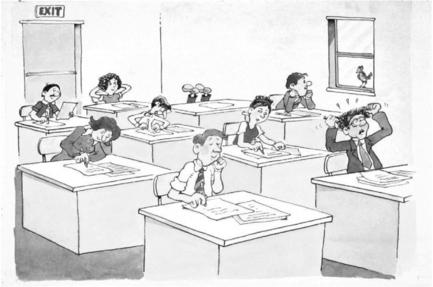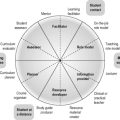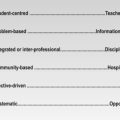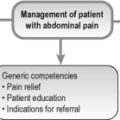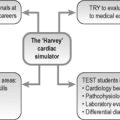29 Written and computer-based assessment
The elements in written assessment
The stimulus
The stimulus for the learner’s response may be:
• a short statement or question, e.g. ‘In which of the following pathologies does a patient typically present with weight loss and an increased appetite?’ or ‘List the 3 options in the management of a patient with hyperthyroidism.’
• a statement or question with accompanying diagrams or charts, e.g. ‘In the diagram which structure is labelled ‘A’?’
• a short clinical scenario with a patient’s presentation followed by a question, e.g. ‘Mrs Wilkie, a 35-year-old waitress complaining of tiredness and nervousness… ’
• a more extended patient management problem that develops over a period of time.
The student’s response
The response expected of the learner can be categorised into:
• Constructed response questions where the student has to write a long or short narrative in response to the stimulus. These include essays, short essay questions and short answer questions.
• Selected response questions where the student has to make a selection from a range of options provided. These include multiple choice questions (MCQs), for example the one best answer or multiple true/false questions and extended matching items.
The assessment of the student’s response
The learner’s response may be scored:
• Automatically correct or incorrect, as in an MCQ where there is an agreed correct answer. This also applies to short answer questions where the expected answer is limited to a few words. In this case, agreement has to be reached with regard to alternative wording and spelling that is acceptable.
• In a constructed response question, by an examiner based on a holistic impression of the student’s response, or with an assigned structured marking scheme.
• In the context of the answers to the questions provided by members of a panel of experts. This is the strategy used in the script concordance test as described below.
Types of written assessment
Essay question
• the learner’s general understanding of the topic
• higher level skills including synthesis, organisation of information, analysis, problem solving and evaluation
• written communication skills, a competence often not tested by other written assessment methods although portfolio assessment may be used for this purpose
Essay questions do have a number of disadvantages as an assessment tool:
Multiple choice questions (MCQs)
Many formats have been described but two approaches have dominated:
• Single best option where the learner is required to select the best response from four or five alternatives.
• Multiple true/false questions where the student has to categorise as true or false each of five statements relating to the stem. Guessing is a more important consideration with this type of question and as a result the marking scheme may be more complicated. There has been a move away from using this type of question although it does test a wider range of knowledge and the questions are easier to set without the need for distracters as in the single best option type of question.
Reflect and react
1. Given the learning outcomes to be tested and the resources available, which format of written test is appropriate to your setting?
2. To what extent does a written examination in your course test more than factual recall?
3. Consider how you can best provide feedback to students about their performance in a written examination. Simply providing a mark, for example 62%, is not sufficient.
Amin Z., Boulet J.R., Cook D.A., et al. Technology-enabled assessment of health professions education: consensus statement and recommendations from the Ottawa 2010 Conference. Med. Teach.. 2011;33:364-369.
Bandaranayake R.C. Setting and maintaining standards in multiple choice examinations. AMEE Guide No. 37. Med. Teach.. 2008;30:836-845.
Case S.M., Swanson D.B. Constructing Written Test Questions for the Basic and Clinical Sciences, third ed. (revised). Philadelphia: National Board of Medical Examiners; 2002.

